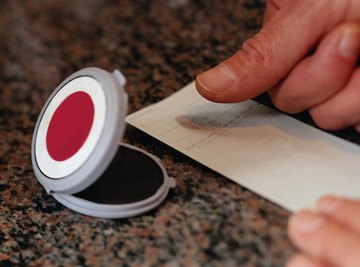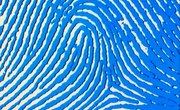
Studying fingerprints is a fascinating subject. Since each person's fingerprints are unique, everyone knows that they can be used to identify the bad guy. Students can experiment to find the best practices for collecting fingerprints and then put their newfound skills to the test in a pretend crime situation.
Dusting for Prints
From watching crime dramas, most students will know that detectives often dust for prints. To do this, they will spread a powder over the fingerprints and then brush off the powder with a soft brush. Once the fingerprint is visible, they can then use clear tape to lift the fingerprint and stick it onto a piece of paper in a contrasting color. Allow students to experiment with different types of powder, such as:
- baby powder
- flour
- cornstarch
- cocoa powder
- sugar
- fine-ground coffee
They should see that fine powders work better and that it's easier to see the prints when they use a powder that contrasts with the surface. If the prints are on a white counter, for example, cocoa powder will work better, but if they're on a dark surface, flour works better.
Fuming for Prints
Detectives can see nonvisible fingerprints by using a technique called fuming. According to Home Science Tools, students can do this by placing an object with fingerprints under a glass jar, along with a glob of superglue. The fumes from the superglue make the fingerprints visible. Students can experiment with other types of material to see if they can get similar results. For example, they might test whether steam from a hot drink, school glue or ordinary paint will allow the prints to show.
All in the Family
According to Science Buddies, fingerprint patterns are inherited genetically, but your students may not know this. Ask them to get a fingerprint from each family member. After bringing this into the classroom, they can make note of the pattern types and draw conclusions. This theory can be stronger when seeing the fingerprints in the extended family. For example, a student's mom, maternal grandma and maternal aunt may all have the same whorls that he finds in his own fingerprints.
Classroom Whodunnit
After students have had some practice getting fingerprints, they'll naturally want to put that knowledge to good use. Have them break into groups of three to five. Each group chooses one student to be the criminal and submits an object with the person's fingerprints along with ink fingerprints from each of the members of the group. Another group has to analyze the fingerprint on the object to determine which member of the group is the criminal.
References
About the Author
Maggie McCormick is a freelance writer. She lived in Japan for three years teaching preschool to young children and currently lives in Honolulu with her family. She received a B.A. in women's studies from Wellesley College.
Photo Credits
Keith Brofsky/Photodisc/Getty Images
